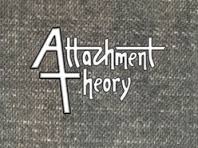John Bowlby
John Bowlby coined the term: Attachment Theory. The short video below explains who he was and his theory. Although adult attachment and infant attachment are not the same (Ziegler, 2014) it is generally accepted in psychology that there is a relationship between the two. For example ambivalent attachment is a term assigned to a child who experiences little or no response by the caregiver when he/she is distressed, crying is discouraged, and independence is encouraged. The child is distressed when the caregiver leaves. As an adult he/she is likely to feel that the significant people in his/her life does not love them. Watch the video and note how Bowlby makes the connection between child and adult attachment.
Research has been done that illustrates the importance of attachment from infancy to adulthood across all cultures (Brown, Rodgers, & Kapadia,2008).
The Mind/Brain connection
There are several sub-catagories in the attachment theory. The previous video covered only the main premis according to Bowlby's theory.The topic has been expanded upon over the years and applied to several, if not all, areas of human development; self-esteem, romantic love ((Hazan, & Shaver, 1987), social attachment (Antonucci, T. C., Akiyama, & Takahashi.2004).etc.. This next video may seem at first to have no relationship to attachment, but, if you keep in mind that we think the way we do and act the way we do you will understand the relationship.
Brain/Mind/Relationships
Both the previous video and this next one illustrates brain plasticity which is a relatively new discovery about the brain (Green, & Bavelier, 2008 ). Also known as neuroplasticity, These terms refeGreen, C. S., & Bavelier, D. (2008r to changes in neural pathways and synapses which are due to changes in behavior, Now we know that although we are born with certain traits like temperament etc., we are not locked into certain behaviors dictated by our genes or our early experiences. Listen to these videos at least two or three times to really understand the concept.
Welcome to my blog. Here, I will post various topics concerning human development. The postings will not be in any particular order of importance, they will be things that I come across, or remember from school or things that just pop up in my head and think might be of interest to you. Please feel free to post any remarks or opinions on the topics.
Antonucci, T. C., Akiyama, H., & Takahashi. K. (2004). Attachment and close relationships across the life span. Attachment and Human
Development, 6, 353–370.
Brown, D., PhD., Rodgers, Y. H., EdD., & Kapadia, K., M.A. (2008). Multicultural considerations for the application of attachment theory.
American Journal of Psychotherapy, 62(4), 353-63. Retrieved from http://search.proquest.com/docview/213145861?
accountid=39364
Green, C. S., & Bavelier, D. (2008). Exercising your brain: A review of human brain plasticity and training-induced learning. Psychology
and Aging, 23(4), 692–701. doi:10.1037/a0014345Griffin, P. (2011).
Hazan, C., & Shaver, P. R. (1987). Romantic love conceptualized as an attachment process. Journal of Personality and Social
Psychology, 52, 522–524.
Ziegler, M (2014). Adult Development and Aging, San Diego,CA: Bridgepoint


